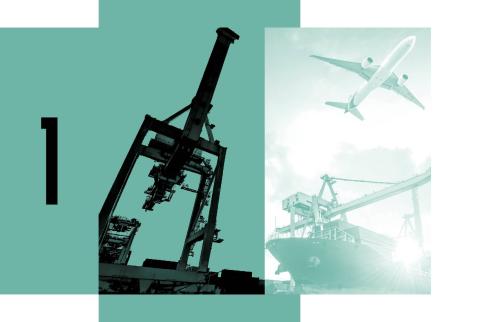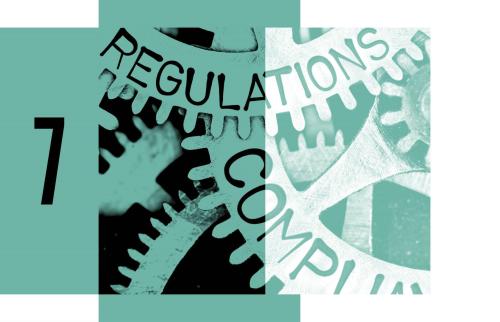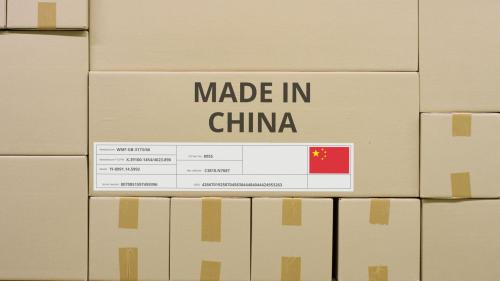This chapter is part of USMCA Forward 2024.
It has been three and a half years since USMCA was signed, ushering in a new era in North American economic cooperation. The passage of USMCA though U.S. Congress with overwhelming bipartisan support also signaled a new economic and political reality and an opportunity to reset the conversation around what can be achieved collectively. The coming into effect of USMCA also paralleled other important developments globally, including rising competition with China and Russian aggression in Ukraine that drew attention to the risks of economic engagement with adversaries. The pandemic also highlighted the fragility of global value chains as well as the resilience of regional supply chains. For example, dependency on China for medical equipment revealed risks for North America while the success of North American supply chains helped to mitigate the risks.
We established the Brookings USMCA initiative shortly after passage of USMCA with the goal of building an evidence base to understand the impact of USMCA for trade, investment, and jobs, and in turn, develop a pathway for how USMCA can help build more competitive, inclusive, and sustainable North American economic relations.
Any assessment of how USMCA is doing so far must start with the growth in trade and investment across North America which has reached record highs, with $1.8 trillion in total trade supporting approximately 17 million jobs. Mexico and Canada are the U.S.’ top trading partners, with the U.S. trading more with Mexico now than with China. A lot of this trade is also generated by movement of goods and services across complex supply chains that produce automobiles, medical equipment, and information technology (IT). USMCA has enabled the extensive trade and investment ties by reducing trade barriers along with regulatory cooperation. USMCA is also an increasingly important source of geopolitical strength. As the U.S. aims to make supply chains more resilient, expand manufacturing of semiconductors, and invest in clean energy and batteries, new and long-term investments will be needed. USMCA can reduce investment risk and increase the attractiveness of investing in North America by creating stability and predictability, a key theme reflected in this report. Moreover, the Biden administration’s view of national security as encompassing economic security underscores how USMCA’s role in building economic security by ensuring supply chain resilience and enabling de-risking of trade with China by reshoring critical supply chains into North America, means that USMCA also strengthens U.S. national security.
This report is the Brookings USMCA initiative’s third annual flagship publication. This report includes thematic-focused chapters from subject matter experts as well as viewpoints from senior government officials and leaders from business and civil society. The report takes stock of the state of the North American relationship and looks at how the three parties, including business and civil society, can further leverage USMCA to strengthen economic relations in the lead up to the joint review in 2026. The USMCA joint review requires that by July 2026 all parties agree to renew USMCA. Failure to renew the agreement in 2026 will lead to an annual joint review that could continue for up to 10 years, and the absence of agreement by all parties to renew USMCA within that timeframe will lead to the agreement’s termination in 2036. This report includes a chapter by Joshua P. Meltzer and Steve Verheul on how to use the mandated joint review productively and in ways that fulfill the original intentions of the negotiators of keeping USMCA up to date. It also argues for swift renewal of USMCA in 2026 to avoid rising uncertainty and reduced trade and investment that would follow. As Goldy Hyder, President and CEO of the Business Council of Canada, points out, failure to renew USMCA “would discourage capital investment, foreign and domestic,” and undermine the very thing that is a source of geopolitical stability.
There are a three key themes in this year’s report that form the backdrop for maximizing the USMCA opportunity—and where progress in the lead up to USMCA renewal in 2026 will be important. The first is the key role of the USMCA labor provisions and their effective implementation. The second is how USMCA can further enable the transition to renewable energy and build a more digitally capable North American economy. The third is the role of USMCA and compliance with USMCA rules as key sources of predictability and stability.
We are honored this year to include chapters from prominent academics and other thought leaders as well as viewpoints from senior government leaders including U.S. Trade Representative Ambassador Katherine Tai, Canadian Minister of Energy and Natural Resources Jonathan Wilkinson, Governor of Chihuahua María Eugenia Campos Galván, Mexican Chief Officer for North America, civil society leaders such as American Federation of Labor and Congress of Industrial Organizations (AFLCIO) President Liz Shuler, and business leaders including President of the American Chamber of Commerce Suzanne P. Clark, President and CEO of the Business Council of Canada Goldy Hyder, Otis CEO and Business Roundtable Chair of Trade and International Committee Judy Marks, as well as CEOs from all three countries.
USMCA and labor
One of the areas of focus in this report is the USMCA labor chapter. This chapter is one of the key developments that distinguishes USMCA from NAFTA. The importance of the USMCA labor chapter is hard to overstate. Its inclusion helped secure the support of Congressional Democrats, and it led to the AFL-CIO also backing the USMCA—the first time the AFL-CIO backed a trade agreement since the Johnson administration in the 1960s. As noted by Ambassador Tai, “the Rapid Response Mechanism is a main reason the revamped USMCA gained the support of many members of U.S. Congress who have opposed free trade agreements.”
The labor chapter includes commitments by the parties to various labor rights and their enforcement, including freedom of association and elimination of forced labor. Implementing these commitments is now seen by many as the litmus test of how trade can support better outcomes for labor both in terms of labor rights and wages. In this respect, the chapter’s innovative rapid response mechanism (RRM) is ground zero for proving the chapter’s effectiveness. Indeed, Liz Shuler highlights the importance of the labor chapter and the RRM for the ongoing support of the AFL-CIO, referring to the RRM as “a notable bright spot.” The RRM allows one country to raise instances of non-compliance with the labor chapter at specific facilities of another country and develop a plan to remediate these issues with that government. Failure to remediate violations allows one of the other governments to impose tariffs or other penalties on exports from that facility. While the RRM is reciprocal, in practice it is only available for use by the U.S. and Canada against facilities in Mexico, and there is no RRM mechanism between the U.S. and Canada.
The various contributions In this report on USMCA and labor show that the impact of the USMCA labor chapter on labor rights and wages in Mexico is complex. Part of the complexity is due to Mexico’s labor reforms, including developing new laws and institutions to adjudicate labor disputes and oversee labor contracts, which were enacted around the time when USMCA came into effect. The chapter from Alfredo Domínguez Marrufo, General Director of the Federal Center for Conciliation and Labor Registration of Mexico, analyzes Mexico’s labor reforms and shows how the USMCA commitments on labor have complemented domestic reforms such as new labor courts, dispute resolution mechanisms, and establishment of the Federal Center for Conciliation and Labor Registration to monitor and regulate labor contracts and strengthen union participation. Domínguez makes clear that the process of implementing labor reforms is ongoing and will take time. Liz Shuler in her viewpoint also underscores the importance of implementing USMCA labor commitments while recognizing that in Mexico “the growth of mature industrial relations and the rule of law is a project that will take decades, not years.”
The RRM has been a focus for the U.S. Trade Representative when it comes to demonstrating that the USMCA labor commitments can lead to positive outcomes. Kathleen Claussen in her chapter analyzes the effectiveness and operation of the RRM. Similar to Domínguez, Claussen agrees that the USMCA labor chapter has interacted with Mexico’s domestic labor reforms in largely positive ways, strengthening Mexico’s labor reform efforts, particularly in states where implementation of domestic labor reforms has been slow. However, Claussen also observes that the RRM needs to remain a complement to Mexico’s domestic reform and enforcement capacities and should not replace the institution building that is underway in Mexico. Claussen makes some recommendation to improve the operation of the RRM, such as more transparency and information sharing with companies where claims are being made.
Expectations differ on the impact of the labor chapter on Mexico’s wages. Liz Shuler emphasizes the need to close the wage gap between manufacturing workers in the U.S. and Mexico. This is indeed an important goal but one that the USMCA labor chapter is unlikely to have much impact on. Santiago Levy in the USMCA Forward 2022 report devoted a chapter to the impact of the USMCA labor chapter on average wage rates in Mexico and found that in the absence of reform to Mexico’s social security laws it is unlikely that USMCA will lead to higher average wages. Addressing low wage rates in Mexico is nevertheless important and is raised by Luz María de la Mora and Governor María Eugenia Campos Galván, who highlight the need to increase the productivity of Mexican workers with improved training. The need to reform Mexico’s education system and worker training programs was addressed by Sylvia Ortega in her contribution to the USMCA Forward 2023 report.
USMCA opportunities and new issues: energy and digital technologies
A second main theme in this report focuses on key opportunities that are regional and therefore require a coordinated North American solution that USMCA can facilitate as part of the agenda for the upcoming joint review. In this regard, the transition to clean energy and a more digitally enabled North American economy stand out. Oscar Ocampo outlines a once in a lifetime opportunity to build a clean energy system across North America and a more integrated North American energy market that strengthens energy security and expands production of critical minerals and batteries. Similarly, José Zozaya and Odracir Barquera highlight the role of USMCA in the transition to electric vehicles.
The transition to renewable energy is well underway in Canada as outlined by Minister Wilkinson, and in the U.S., this transition has been given a huge boost with the Inflation Reduction Act. Yet, and as Ocampo points out, “Mexico’s energy sector is in disarray” due to the Andrés Manuel López Obrador administration’s energy policies that have sought to position PEMEX as the leading supplier of carbon intensive energy at the cost of private sector investment into renewable energy. This includes the administration’s undermining of the federal electricity Commission (CFE) as the independent energy regulator. Moreover, delays permitting new transmission lines has led to under investment in Mexico’s energy sector just when investment opportunities are generated by the IRA and Chips Act. For many companies, access to low carbon energy is also important to meet climate goals.
Ocampo identifies various ways to increase access to clean energy with more crossborder energy cooperation. For example, the new transmission line between Quebec and New York to deliver clean energy demonstrates the win-win nature of crossborder energy trade. In addition, building a more integrated North American energy market requires technical level cooperation to develop common standards such as for transnational energy infrastructure. Minister Wilkinson underscores the need for significant new investments to facilitate the transition to clean energy, and the importance of USMCA in providing the certainty and business environment that can reduce risk and enable these investments.
Alejandra Palacios and Christian Norton’s contribution focuses on the opportunities for North America to expand trade and cooperation in digital technologies, strengthen regulatory cooperation, and harmonize regulation of the digital economy across the region. The USMCA digital trade chapter is one of the most advanced on digital trade and regulatory cooperation. USMCA already includes commitments to cooperation in cybersecurity and privacy regulation, but more engagement on these issues is needed. There are other areas important for the digital economy where USMCA has little to say but where cooperation is also needed, such as Artificial Intelligence (AI) governance and export controls of sensitive technologies. Blanca Treviño highlights the need to do more with the USMCA in AI governance and cybersecurity. Palacios and Norton argue that establishing a North American digital trade forum is needed as a focal point for cooperation on digital issue, and a similar recommendation was made by Patrick Leblond in his chapter on digital trade for the USMCA Forward 2022. Progress on these fronts would strengthen outcomes in terms of the digital trade opportunities but also ensure appropriate digital regulation and trust.
USMCA as a source of stability in a turbulent world
There are two ways that USMCA creates stability and predictability in North American economic relations. The first is through the regular meetings among government officials, business, and civil society, and the second is through USMCA dispute settlement. A chapter co-authored by three former ambassadors from each country discusses the significance of the increasingly dense web of meetings and processes for cooperation in developing trust. USMCA mandates regular committee meetings to oversee the functioning of the agreement and to identify and resolve potential trade issues. USMCA includes a commitment to annual ministerial level meetings of the Free Trade Commission (FTC) which sets the agenda and direction for future work on USMCA. For instance, the last meeting of the USMCA FTC in August 2023 decided to expand the benefits of the USMCA by strengthening competitiveness and increasing the participation of small and medium-sized enterprises (SMEs) and underrepresented communities.1
These USMCA focused meetings are complemented by other high-level bilateral and trilateral meetings among government officials and between business leaders, including the North American Leaders Summit, the U.S.-Mexico High Level Economic Dialogue, and the U.S.-Canada Roadmap for Renewed U.S.-Canada Partnership. Similar dialogues on the industry side focus on deepening economic cooperation across the region. Roberto Velasco, the Chief Officer for North America in the Mexican Ministry of Foreign Affairs, in his viewpoint underscores the importance of these trilateral and bilateral initiatives that complement engagement under USMCA.
The three authors of this chapter also identify how USMCA meetings and the broader range of interactions across government, industry, and civil society could be used to expand the benefits of USMCA to small businesses and to build a more robust competitiveness and innovation agenda. Indeed, a common theme in this report is that deepening cooperation across North America is needed to strengthen the competitiveness of the region. As Suzanne P. Clark, President of the U.S. Chamber of Commerce, outlines, a competitiveness agenda should include workforce development and increasing investment into critical sectors such as energy. According to Judy Marks, the USCMA is needed to incentivize further economic integration and development of sectoral supply chain ecosystems to boost competitiveness. For her part, Luz María underscores the important role that Mexico can play in bolstering the region’s supply chain, leveraging its cheap labor and providing an alternative to China-centered supply chains. Similarly, Galván also highlights the opportunities to further deepen and grow the trade and investment relationship across North America.
Another important part of USMCA is the reforms to its various dispute settlement mechanisms. Robert Howse, Professor of International Law at NYU Law School, analyzes these developments, describing the changes to the investor-state dispute settlement mechanism and the reforms to the state-to-state system that has led to it being used eight times. Howse observes that the renewed functioning of USMCA state-state dispute settlement demonstrates a real commitment by each government to using USMCA to settle disputes. Yet, a common theme in this report is that instances of non-compliance with dispute settlement decisions reduce the ability of USMCA to provide certainty and predictability for traders and investors. Indeed, the Brookings USMCA initiative’s scorecard which tracks compliance with USMCA shows all three governments at various stages of non-compliance, with Mexico being the most non-compliant, followed by the U.S., and then Canada.
Howse recognizes the important role of dispute settlement and compliance in creating certainty and predictability. He also observes how state-state USMCA disputes often engage complex commercial and other government interests that affect how each government responds to dispute settlement decisions. While failure to comply with a USMCA dispute, such as U.S. non-compliance with the USMCA decision on auto rules of origin, creates uncertainty for business, Howse argues that instances of non-compliance also need to be understood in the context of complex multidimensional relationships that might counsel against an overly confrontational stance on trade and investment, rather than as a systemic disregard of USMCA commitments.
This report is being released in advance of elections in the U.S. and Mexico this year and in Canada in 2025. The outcomes of these elections will undoubtedly have important implications for the future of USMCA, for North American relations, and for the joint review in 2026. This report underscores the enormous benefits that the USMCA has produced for businesses and workers as well as its role in strengthening the hand of the U.S. in its geopolitical competition with China and lays out an agenda to further strengthen economic relations. These are goals that should be worth pursuing, irrespective of who leads each country.
More from USMCA Forward 2024








The Brookings Institution is committed to quality, independence, and impact.
We are supported by a diverse array of funders. In line with our values and policies, each Brookings publication represents the sole views of its author(s).






